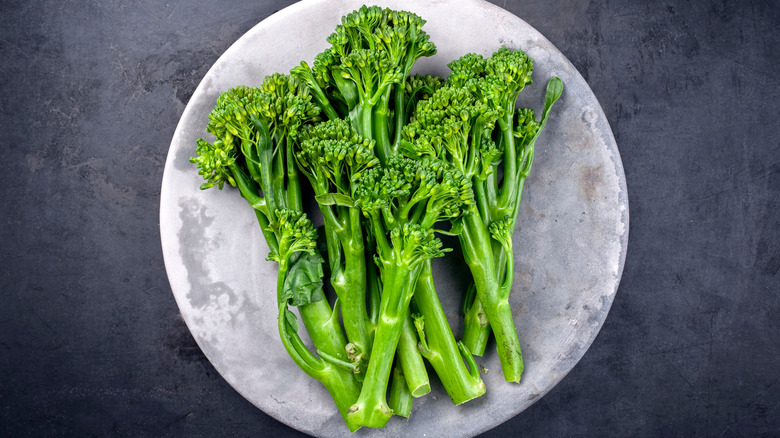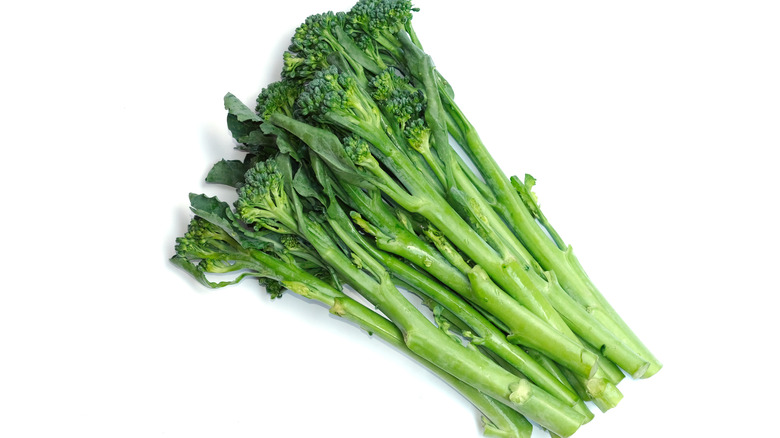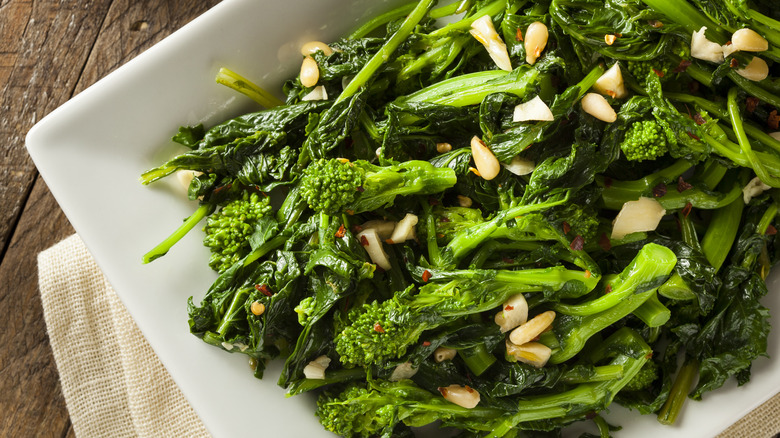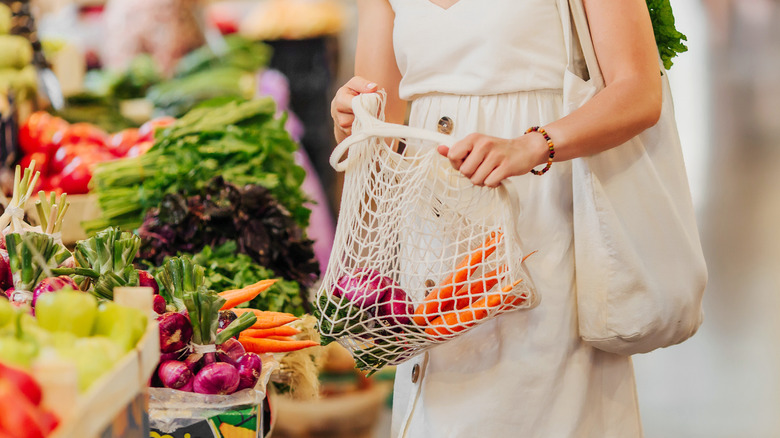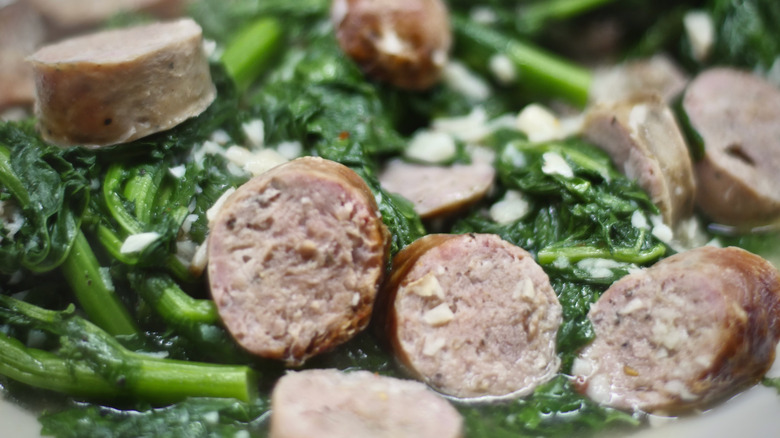What Is Broccoli Rabe And Can You Eat The Leaves?
The next time someone in your family says they don't want broccoli, you might want to go ahead and fire up a pan with some broccoli rabe (pronounced like "rahb") instead. According to Bon Appetit, this savory little broccoli-looking veggie — despite its similar looks to broccolini and the like — is actually more akin to the turnip than its doppelgängers. And sure, maybe not everyone knows what to do with some nice stems of broccoli rabe, but if you want a new little kick to add to your repertoire, broccoli rabe might be just the thing.
Food and Wine describe this cruciferous veggie, also known as rapini, as "wild and unruly" in appearance. The stems are noted for their savory bitter taste while the leaves are known for their nuttiness. While it classically pairs with a nice link or two of Italian sausage, be it in a sandwich or simply on your plate, broccoli rabe can even work as a nice side dish, sautéed in olive oil and ready to chow down on. Here's everything you should know if you're liking the vibe of this veggie.
Is it safe to eat the leaves?
There are three parts to broccoli rabe: The stems, the blossoms, and the leaves. According to Food 52, there's nothing to worry about when it comes to devouring every part of the broccoli rabe, as every part is indeed edible. Perhaps you might want to cut off the very end of the stem before cooking it, as it can get woody, but other than that this veggie needs little-to-no prepping before throwing it into the pan with some olive oil. The only thing you might want to be wary of is its shelf life.
Broccoli rabe tends to last in the crisper drawer for between three to five days. Similar to broccoli, the florets on the top will begin to turn yellow as it gets old, so if you see yellow flowers, you might want to pass. Another sign that your broccoli rabe may be in its twilight is if the stems are giving off a cabbage-like smell, which means stay away. And that goes for just about anything that isn't cabbage itself.
Health benefits of broccoli rabe
Though just about anything green and broccoli-looking is bound to be healthy, broccoli rabe has quite a few benefits that put it in a class of its own. According to Nutrition and You, broccoli rabe is one of the lowest-calorie greens out there, with only 22 calories per 100 grams of raw leaves, while still being able to hold plenty of vitamins and folates. With intensely high amounts of vitamins A and K, it does more than its job when promoting healthy skin, bones, and vision.
Promoting a healthy body isn't the only thing broccoli rabe can do, though. It can help to prevent numerous health problems, ranging from arthritis and osteoporosis to cardiovascular diseases and colon and prostate cancer. It could even make you sound hip at your local grocery store. So even if you don't particularly care for bitter veggies or anything that even looks like broccoli, broccoli rabe might still be worth your while.
Where to buy broccoli rabe
As healthy and unique as broccoli rabe is, it's not necessarily in every grocery store in the country. According to Thrive Cuisine, even if your local food store does have it, you may need to do some sleuthing around to find it. The most obvious place to look is the produce section, especially in the area where they would carry similar greens, like kale or spinach. If not, they may have it on a specialty display, considering broccoli rabe is still finding its niche in the U.S. veggie world.
If you still don't find this green gold there, you may even want to check the frozen food section or an area of the store that has jarred veggies. If not, there are still plenty of stores that will likely, if not be guaranteed to, have broccoli rabe. Most of the big names, such as Trader Joe's, Whole Foods and Kroger carry broccoli rabe, but there's always a good chance that if you know of a good farmer's market, Italian or Asian market, you'll be in luck with this green, bitter machine.
A classic Neapolitan dish
While broccoli rabe may be being used all over the world now, according to La Cucina Italiana, it has its roots in southern and central Italy, particularly connected to the Campania region that's home to Naples. While it may have various names throughout the peninsula (and world for that matter), broccoli rabe is known as "friarielli" in Naples. It's thought by some that the name is a Spanish term—"frio-grelos", meaning something to the effect of "winter broccoli", while others deduce that it comes from the Neapolitan word — "frjere", meaning "to fry", per La Cucina Italiana, which is one of the ways broccoli rabe was originally cooked.
One of the most classic, traditional dishes in the Naples area is "Salsiccia e friarielli" (sausage and broccoli rabe). And it's a simple and rich dish that takes barely any time to put together. While browning your Italian sausages with some lard on medium-high flame, begin washing and browning the broccoli rabe in a separate pan with oil, garlic and red pepper flakes for about fifteen minutes. If in the meantime, your sausage begins to burn, simply add a little white wine to the mix. And in less than twenty minutes, you have yourself a meal worthy to sit in the shadow of Vesuvius.
